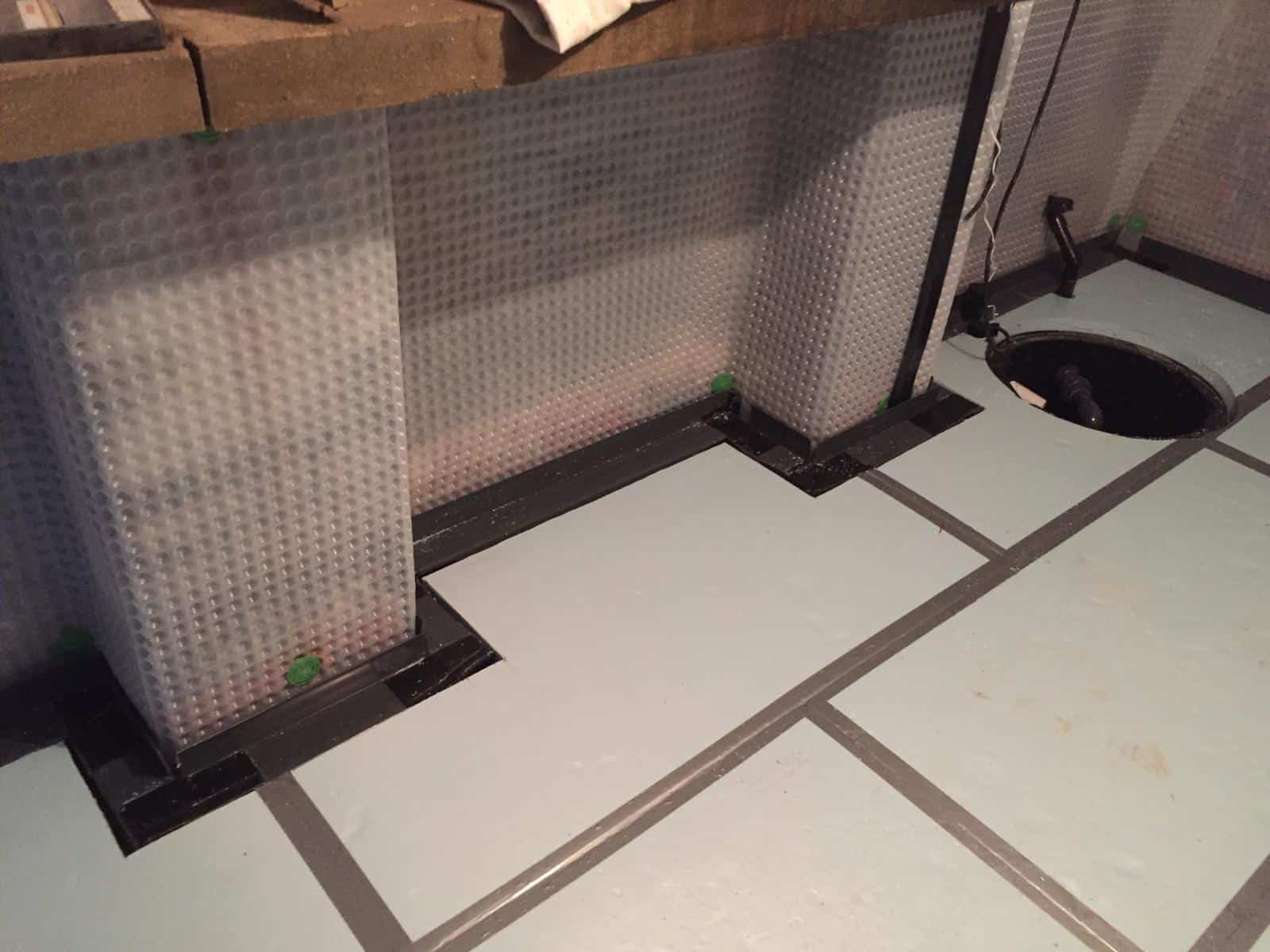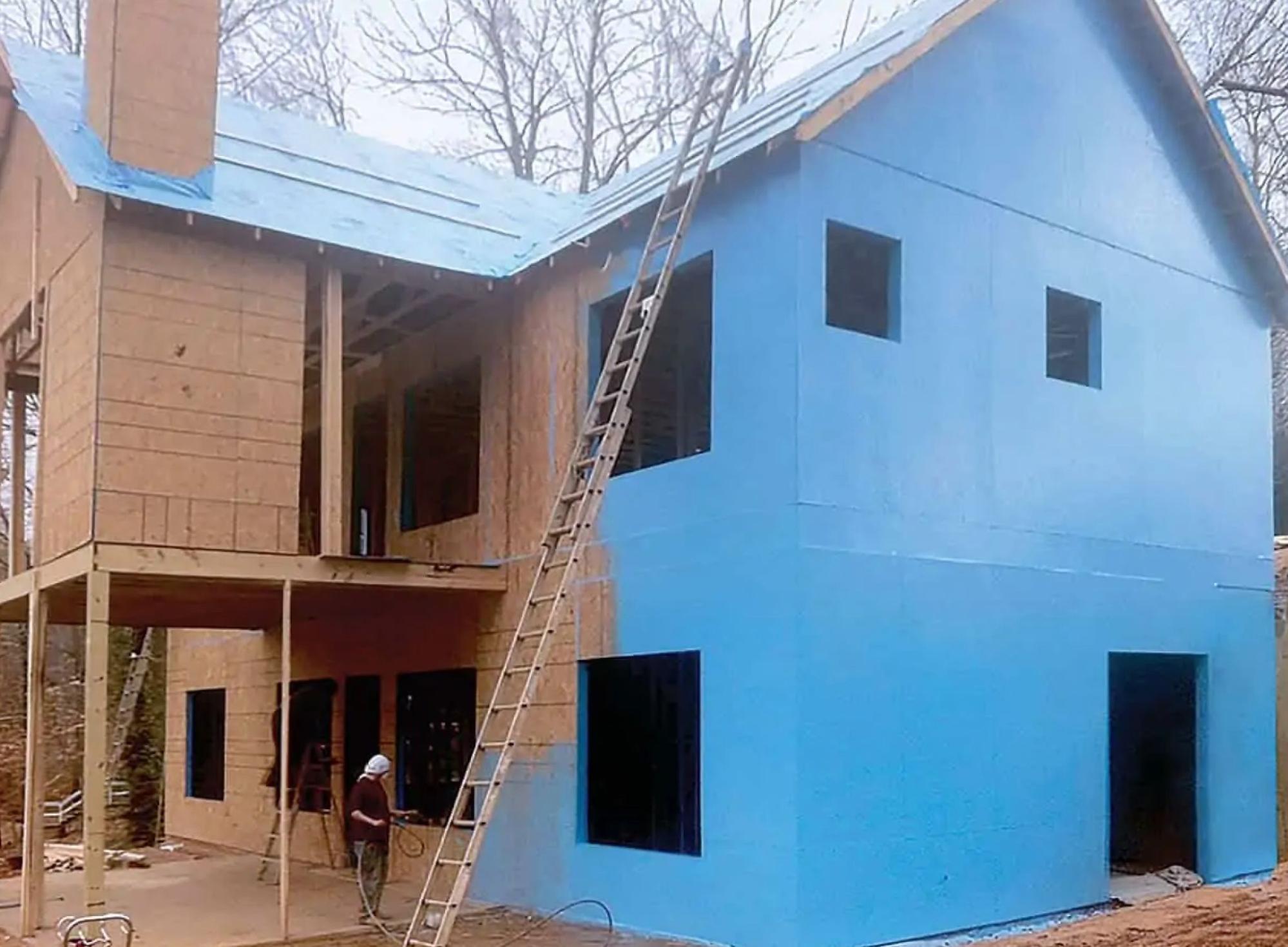Expert-approved tips for damp specialist newcastle to protect your building's structure
Exploring the Different Strategies and Solutions for Effective Damp Proofing
Wetness in buildings postures significant difficulties to both structural stability and interior air top quality. Different strategies and remedies have emerged to fight this prevalent concern. From typical damp-proof membranes to ingenious chemical therapies, each method offers special advantages. Recognizing these alternatives is essential for efficient wetness control. Choosing the appropriate solution depends on particular building problems and demands, motivating more expedition into the most effective damp proofing strategies available.
Understanding the Root Causes Of Dampness
Dampness can develop from numerous sources, recognizing these causes is important for efficient removal. Commonly, moisture stems from 3 primary resources: increasing damp, penetrating damp, and condensation. Climbing damp occurs when groundwater takes a trip upwards via porous products, such as brick or stone, frequently due to an absence of an effective obstacle (damp removal newcastle). Permeating damp is normally brought on by outside factors, consisting of roofing leakages, defective gutters, or harmed walls, enabling water to infiltrate a residential or commercial property. Condensation, on the various other hand, results from excess dampness in the air, commonly intensified by inadequate ventilation and temperature level differences, causing water beads basing on surfaces. Recognizing these underlying concerns is necessary, as each sort of dampness calls for a customized technique for remediation. Appropriate analysis helps in figuring out the most efficient options, ultimately securing the structural stability of a structure and boosting indoor air high quality
Conventional Damp-Proof Membranes

Chemical Damp-Proofing Solutions
Chemical damp-proofing services provide an innovative method to stop wetness invasion in structures. These approaches generally include the application of fluid chemicals that permeate masonry and develop an obstacle against rising moist. Commonly utilized chemicals include silanes, siloxanes, and other water-repellent representatives that react with surface products to develop a hydrophobic layer.The application process typically needs exploration openings right into the wall surfaces, injecting the chemical option, and permitting it to heal. This technique is especially beneficial for older structures where conventional damp-proof membranes may be unwise. Chemical damp-proofing can be less disruptive and a lot more economical than considerable improvement projects.While efficient, these remedies depend on correct application and ecological conditions for peak performance. damp proofing newcastle. Regular upkeep and surveillance are vital to ensure the long life of the damp-proofing treatment. Generally, chemical damp-proofing stands for a versatile choice for protecting buildings against moisture-related damage
Cavity Wall Building And Construction Methods
Tooth cavity wall surface building techniques supply various benefits, specifically in dampness control and energy efficiency. By incorporating an air gap between 2 layers of masonry, these wall surfaces successfully mitigate water access while enhancing insulation. This mix not just protects structures from dampness but also adds to reduced energy intake.
Advantages of Cavity Wall Surfaces
When considering efficient damp proofing techniques, the advantages of cavity wall surfaces stick out plainly. Dental caries wall surfaces contain two different layers, creating an air void that properly decreases dampness infiltration. This design lessens the risk of wetness, as the outer wall serves as a barrier versus rainfall and water access. Furthermore, dental caries wall surfaces boost thermal insulation, which adds to energy effectiveness by reducing warmth loss. They additionally provide audio insulation, helping to create a quieter indoor environment. Furthermore, the air space enables air flow, which aids in wetness control and minimizes the probability of mold and mildew growth. These benefits not just improve the general comfort of a building however likewise add to its long life and architectural integrity.
Wetness Control Strategies
Reliable wetness control methods are vital in tooth cavity wall building to assure long-term defense against dampness. One main method includes the unification of weep holes, which promote water drain from the tooth cavity, preventing buildup. Furthermore, the use of breathable membranes can help handle dampness levels while permitting entraped vapor to run away. Proper placement of insulation is additionally important, as it must not block drainage paths. Ensuring that the external fallen leaves of the tooth cavity wall are created with waterproof materials boosts general toughness. Regular upkeep checks are necessary to identify any type of blockages or damage early, safeguarding the structure's honesty. Ultimately, a mix of these methods creates a robust defense against dampness breach in cavity walls.
Insulation and Energy Effectiveness
Insulation plays an important function in improving power performance within tooth cavity wall surface building and construction. By including insulating products, these walls create a thermal obstacle that reduces heat loss and decreases energy intake. Efficient insulation not only assists preserve a steady interior temperature level yet also minimizes the threat of moisture, as it avoids condensation within the wall surface dental caries. Various methods, such as the use of inflexible foam boards or mineral wool, can be employed to achieve excellent insulation efficiency. Furthermore, correct installation is important to guarantee that voids and gaps are lessened, which can or else jeopardize power effectiveness. Ultimately, a well-insulated dental caries wall adds considerably to overall sustainability and decreases cooling and heating expenses for homeowners.
Exterior Damp Proofing Techniques
Outside damp proofing techniques are necessary for safeguarding frameworks from moisture seepage. Two efficient strategies consist of the application of water resistant membranes and the installation of French drains pipes. These remedies help reduce water accumulation and preserve the integrity of buildings.
Waterproof Membrane Application
While different techniques exist for preventing dampness ingress, the application of water resistant membrane layers continues to be a highly effective external wet proofing strategy. These membranes are generally made from products such as polyethylene, rubber, or customized bitumen, offering a robust barrier versus water infiltration. The installation process includes using the membrane to the outside surface areas of structures or wall surfaces, making sure total coverage to stop leaks. Appropriate bond and sealing at joints are essential to optimizing performance. Water-proof membrane layers can be used in various types, including liquid finishings and sheet membranes, enabling for versatility based on the particular demands of the framework. This approach not just secures structures from moisture yet likewise enhances their durability and structural integrity.
French Drainpipe Installment
One efficient method for managing groundwater and protecting against dampness check here accumulation around a building's structure is the setup of a French drain. This drainage system contains a trench filled up with gravel and a perforated pipeline that redirects surface water far from the structure. Correct installment needs careful planning, making sure that the drain inclines away from the framework to assist in ideal water circulation. Additionally, the area of the drainpipe is vital; it should be positioned in locations susceptible to pooling or excess moisture. Normal maintenance, including clearing up debris from the crushed rock and making sure the pipe remains unblocked, is crucial for long-lasting effectiveness. Eventually, a well-installed French drainpipe can substantially decrease the threat of water-related problems in basements and foundations.
Inside Waterproofing Strategies
Interior waterproofing methods are essential for shielding a building's interior from wetness infiltration and possible water damages. These methods typically involve the application of customized products and strategies designed to create a wetness obstacle within the structure. One typical approach is the use of water-proof finishings or sealants on wall surfaces and floors, which protect against moisture from passing through surfaces.Additionally, mounting indoor drain systems, such as sump pumps, can successfully take care of water accumulation in basements and crawl spaces. Another method includes using vapor barriers, which are mounted to prevent wetness motion from the ground into living spaces.Moreover, attending to any fractures or spaces in wall surfaces or foundations with appropriate sealers assures a complete defense against water breach. By applying these indoor waterproofing methods, home owners can substantially decrease the risk of mold development, structural damages, and other moisture-related issues. Proper implementation of these techniques is important for long-term defense and structure honesty.
Normal Upkeep and Evaluation Practices
Normal maintenance and inspection techniques are crucial for assuring the long-term performance of moist proofing solutions in any type of building. Routine checks enable home owners to recognize very early indications of wetness intrusion, such as peeling off paint, mold and mildew development, and stuffy smells. These signs can indicate underlying issues that need immediate attention.Inspections must be conducted at the very least each year, concentrating on at risk areas like cellars, creep spaces, and exterior wall surfaces. During these analyses, homeowner need to examine sealers, water drainage systems, and air flow to validate they operate correctly.Additionally, preserving rain gutters and downspouts is crucial, as blocked systems can result in water buildup near the structure. Applying a routine maintenance routine, along with timely repairs, can significantly expand the life expectancy of wet proofing procedures and safeguard the structural integrity of the building. Aggressive actions eventually add to the overall health and wellness and security of the living environment.
Often Asked Questions
For How Long Does Damp Proofing Commonly Last?
The duration of wet proofing performance differs, usually lasting in between 20 to 50 years. Aspects such as application quality, ecological problems, and maintenance practices substantially influence the durability of the moist proofing treatment.

Can I Damp Evidence My Home Myself?
The specific pondered the usefulness of DIY damp proofing. With correct research and the appropriate products, it is possible. They likewise acknowledged the importance of expert assistance to ensure resilient efficiency and prevent future problems.
What Are the Indicators of Ineffective Damp Proofing?
Signs of inadequate damp proofing include persistent moldy smells, noticeable mold development, peeling paint, moist patches on walls, and timber degeneration - damp removal newcastle. Homeowners must deal with these problems quickly to stop additional damage and wellness issues
Does Damp Proofing Affect Indoor Air Quality?

Just How Much Does Expert Damp Proofing Expense?
Expert wet proofing prices vary substantially, generally varying from $1,000 to $5,000 depending upon the residential or commercial property's size, the level of the wet concern, and selected techniques. Each scenario requires a customized evaluation for accurate pricing. Generally, wetness originates from 3 key resources: increasing moist, permeating moist, and condensation. When thinking about efficient moist proofing approaches, the advantages of tooth cavity walls stand out prominently. Exterior wet proofing techniques are important for safeguarding structures from wetness infiltration. While different approaches exist for stopping dampness ingress, the application of waterproof membrane layers continues to be an extremely efficient external damp proofing method. Signs of ineffective wet proofing include relentless musty smells, noticeable mold development, peeling paint, damp patches on walls, and wood decay.